Best known as a self-portraitist, Claude Cahun assumed a variety of performative personae. Cahun’s photography work was considered surrealist, however Cahun was also a sculptor and writer. Cahun incorporated a non-binary perspective into her work which gave her an original take on surrealism.
According to Jersey Heritage, Claude Cahun was a pseudonym Lucy Schwob employed in order to become a gender neutral artist. In her writing she consistently referred to herself as “elle” while also claiming that her actual gender is fluid. Cahun is most well known for her androgynous appearance, which challenged the strict gender roles of her time.
During the 1920s, Cahun produced an astonishing number of self-portraits in various guises such as aviator, dandy, doll, body builder, vamp and vampire, angel, and Japanese puppet.
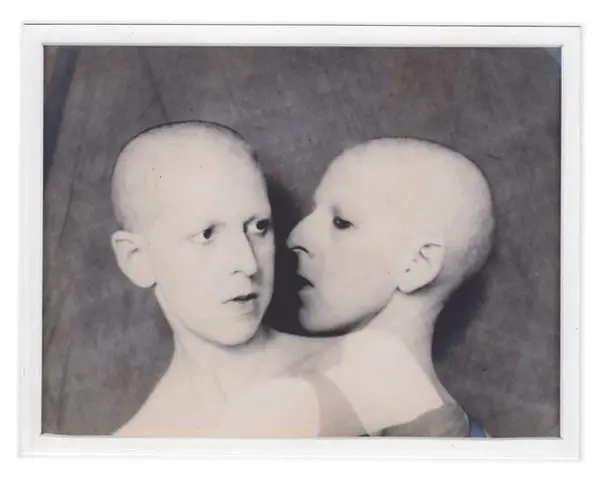
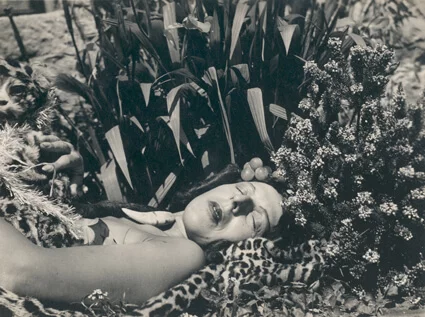
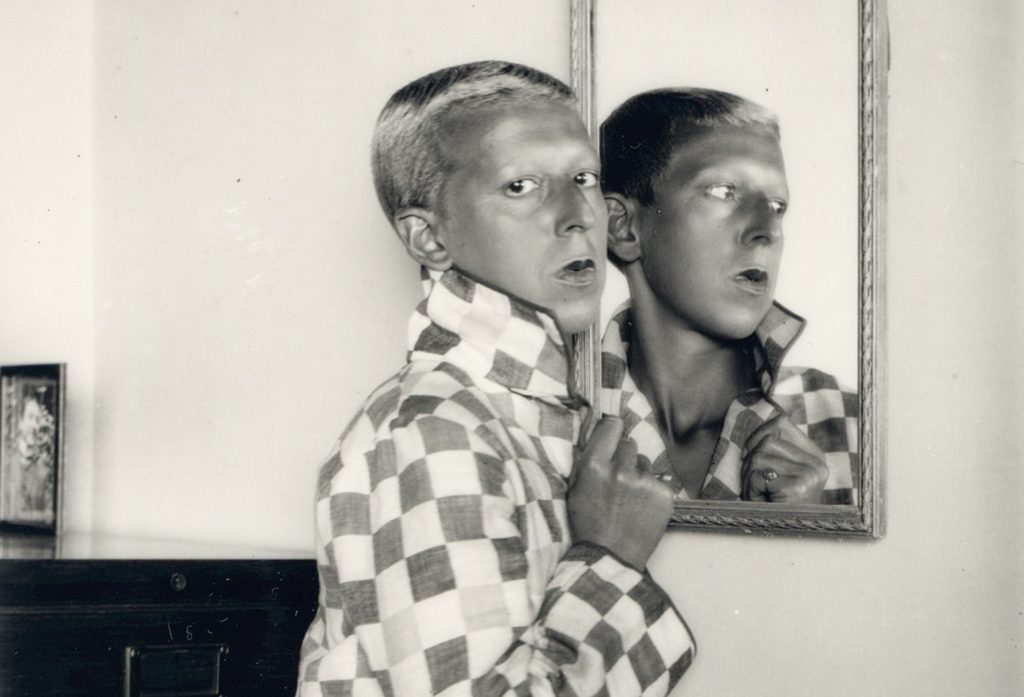
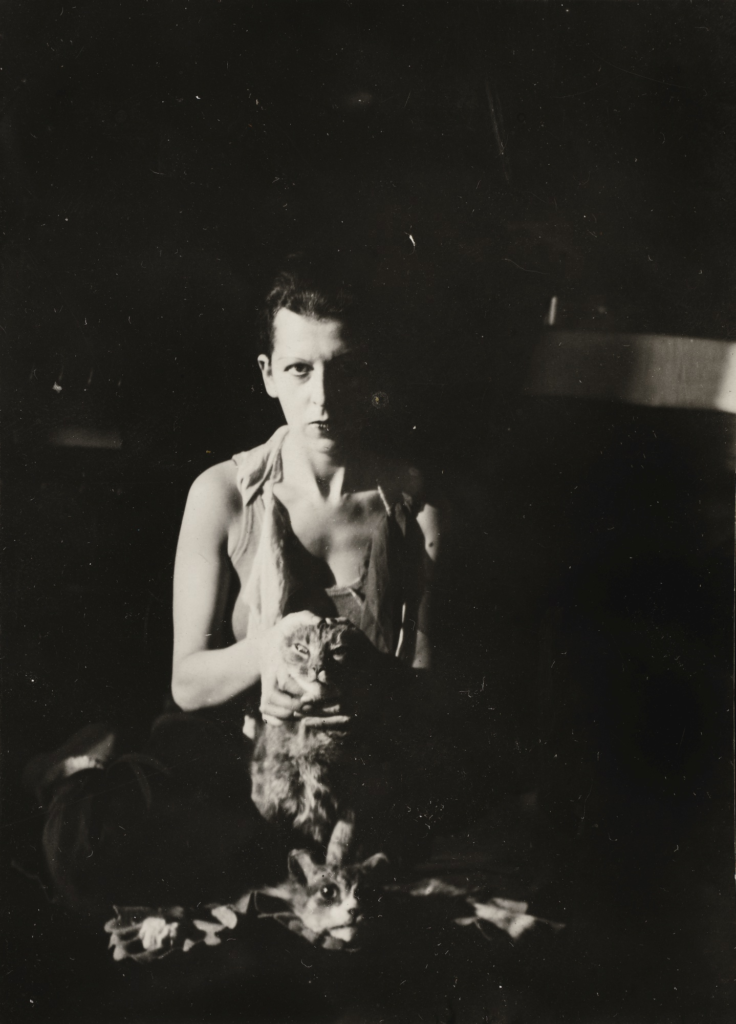

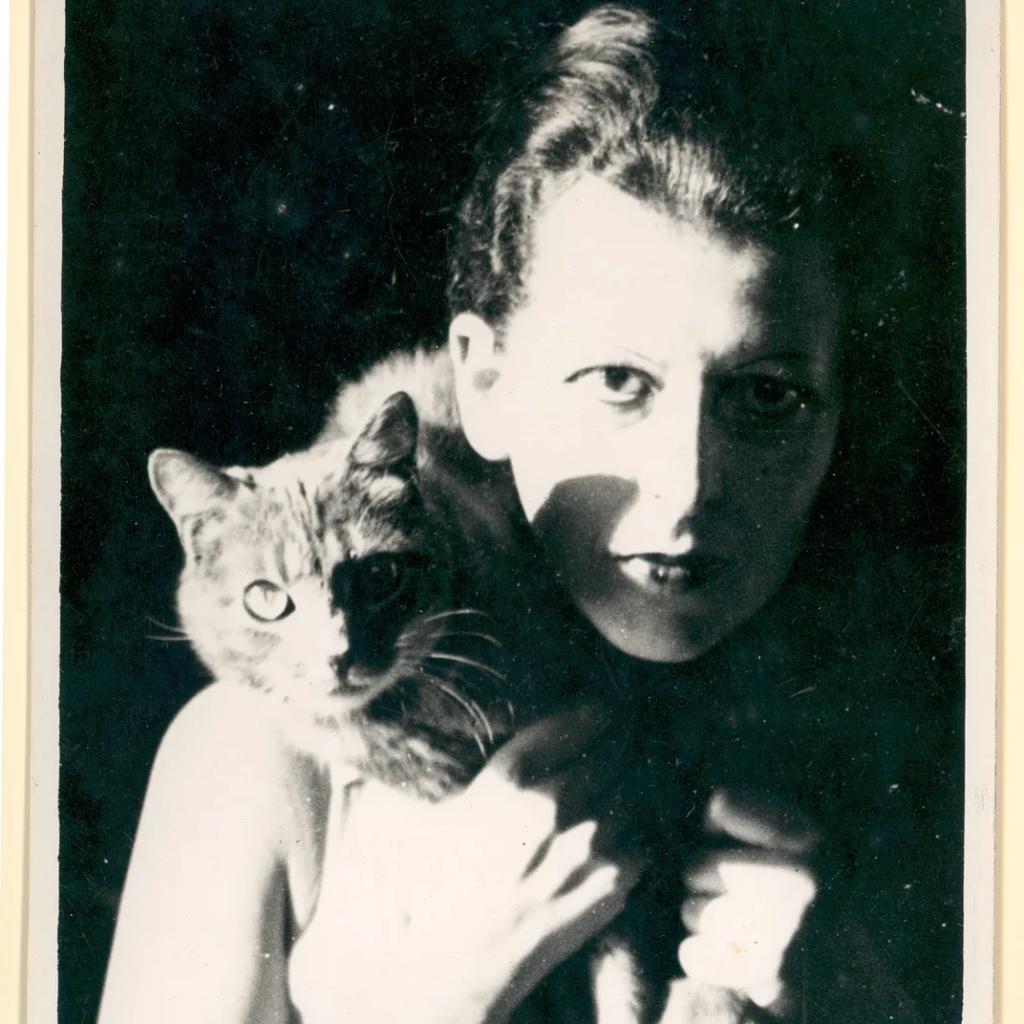
Image analysis
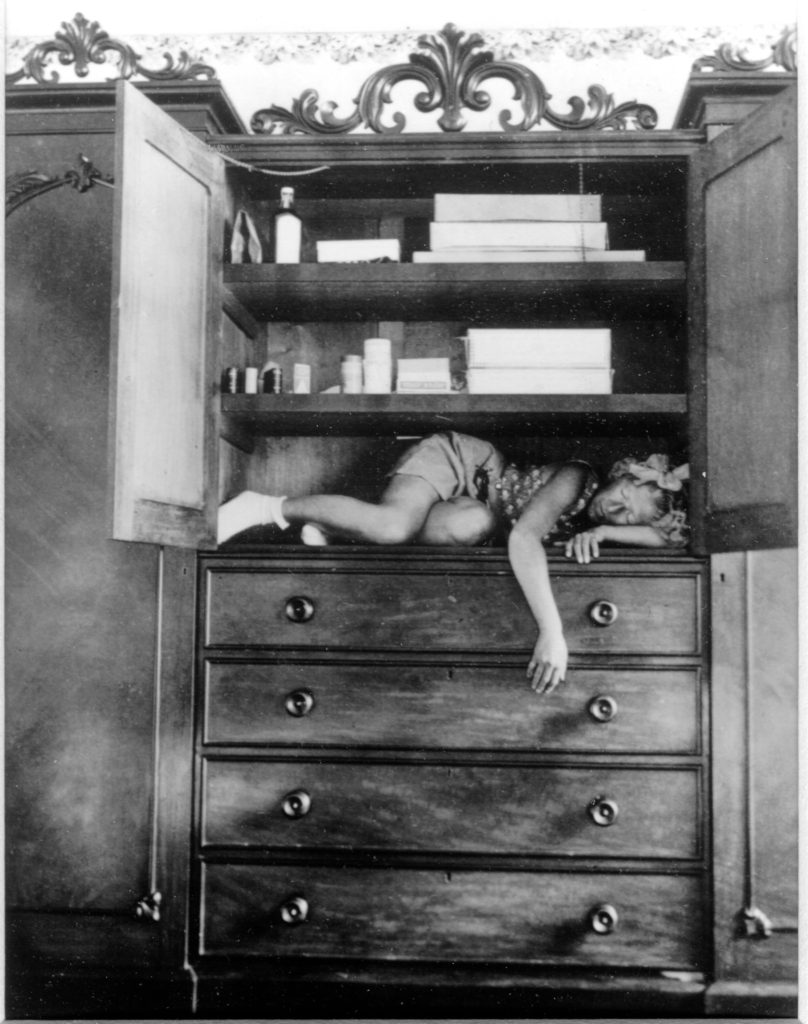
The photograph itself is in black and white. From first impressions, attention is drawn to the midground where Claude Cahun is. This is due to a number of things, one being her pose. The fact she is in a cupboard raises a number of questions for the audience, while also invoking an emotional response.
Then, there is lots of horizontal lines created from the cupboard as well as corresponding vertical lines which act together as a sort of frame and adds lines of symmetry to the image. There are some objects also placed in the cupboard which aren’t as symmetrical but they are still uniform in the sense that they are horizontal and block shaped. Claude lying in the cupboard contrasts with this symmetry due to her overall body shape as well as how her hand is positioned. Her hand hung down breaks up the vertical lines in the cupboard and emphasises how she is out of place in the setting.
The amount of straight lines in the image creates a sense of uniformity. The way Cahun has position and posed herself communicates a message of being out of place and discomfort.
